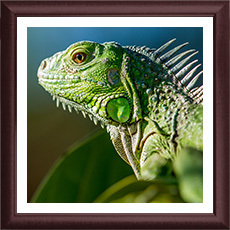The picture border!
A square picture has a border which is 5 cm wide. The picture's area is
of the total area. Find the area of the picture.

This section requires Javascript.
You are seeing this because something didn't load right. We suggest you, (a) try
refreshing the page, (b) enabling javascript if it is disabled on your browser and,
finally, (c)
loading the
non-javascript version of this page
. We're sorry about the hassle.
With the area of the picture ( P ) being 9 4 of the total area ( T ), the area of the frame ( F ) is 9 5 of the total area. T − P = 9 9 T − 9 4 T = 9 5 T = F
Thus, the difference between F and P : F − P = 9 5 T − 9 4 T = 9 1 T
Of the total area, the parts of the frame that do not have dimensions in common with the picture are the 4 corners ( 4 C ). C = 5 × 5 = 2 5 4 C = 4 × 2 5 = 1 0 0
Due to this observation, it's reasonable to assume that 4 C is equal to the difference between F and P : 9 1 T = 1 0 0 Thus: 9 4 T = 4 0 0
To verify, each of the 4 edges of the frame that do not constitute as the corners would also have an area of 9 1 T , with a width of 5cm, and a length of 20cm. 5 9 1 T = 5 1 0 0 = 2 0
( 4 × 2 0 ) + ( 4 × 2 5 ) = 5 0 0 = F
The length of 20cm corresponds to the length of each edge of the square picture. 2 0 2 = 4 0 0 = P
Which checks out with the total area: T = F + P = 5 0 0 + 4 0 0 = 9 0 0 9 0 0 4 0 0 = 9 4